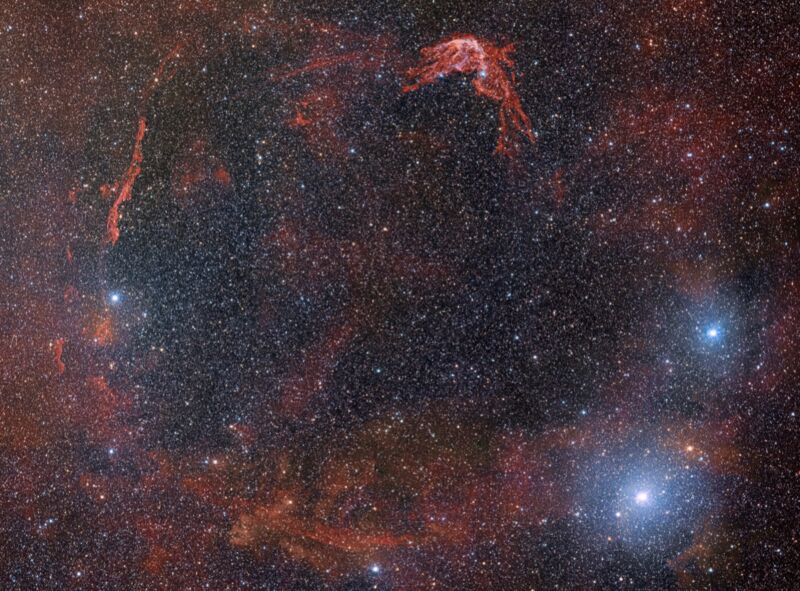
Enlarge / The tattered shell of the first recorded supernova (Sn185) was captured by the Dark Energy Camera. This image covers an impressive 45 arcminutes in the sky—a rare view of the entirety of this supernova remnant. (credit: CTIO/NOIRLab/DOE/NSF)
In early December 185 CE, Chinese astronomers recorded a bright "guest star" in the night sky that shone for eight months in the direction of Alpha Centauri before fading away—most likely the earliest recorded supernova in the historical record. The image above gives us a rare glimpse of the entire tattered remnant of that long-ago explosion, as captured by the Dark Energy Camera (DECam), mounted on the four-meter telescope at the Cerro Tololo Inter-American Observatory in the Andes in Chile. DECam has been operating since 2012, and while it was originally designed to be part of the ongoing Dark Energy Survey, it's also available for other astronomers to use in their research. This new wide-view perspective of the remains of SN 185 should help astronomers learn even more about stellar evolution.
As we've written previously, there are two types of known supernovas, depending on the mass of the original star. An iron-core collapse supernova occurs with massive stars (greater than 10 solar masses), which collapse so violently that it causes a huge, catastrophic explosion. The temperatures and pressures become so high that the carbon in the star's core fuses. This halts the core's collapse, at least temporarily, and this process continues, over and over, with progressively heavier atomic nuclei. When the fuel finally runs out entirely, the (by then) iron core collapses into a black hole or a neutron star.
Then there is a Type Ia supernova. Smaller stars (up to about eight solar masses) gradually cool to become dense cores of ash known as white dwarfs. If a white dwarf that has run out of nuclear fuel is part of a binary system, it can siphon off matter from its partner, adding to its mass until its core reaches high enough temperatures for carbon fusion to occur. These are the brightest supernovae, and they also shine with a remarkably consistent peak luminosity, making them invaluable "standard candles" for astronomers to determine cosmic distances.
Read 3 remaining paragraphs | Comments
